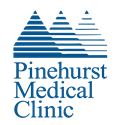February 20th, 2023

5 Ways to Practice Prescription Safety
By: Alyssa Lee, PharmD, Clinical Pharmacist
Prescriptions can be a solution to a problem. A healthcare provider may prescribe metformin to help lower the blood sugar levels of someone who has Type 2 diabetes or a statin to help lower cholesterol. However, if prescription medication is taken incorrectly, it can do more harm than good.
Every year over one million people end up in hospital emergency departments due to medication side effects caused by prescription misuse. As a clinical pharmacist, it is important to me that patients understand how to correctly take their prescriptions, safely. Here are five ways to make sure you are practicing prescription safety:
1. Take prescriptions as directed.
Taking too much of a medication or the wrong medication can lead to injury or even death. Even accidentally taking two blood pressure pills instead of one can lead to negative side effects. Incorrectly taking certain medications can cause damage to your kidneys and liver.
2. Don’t skip doses.
It is not safe to alter your prescribed dose without consulting with your doctor. Taking less of a prescription or skipping it altogether because you are experiencing negative side effects should never be an option. Side effects are common but you shouldn’t feel like you have to try and tolerate them because your doctor started you on that medicine.
Communication is key. Always discuss how your medications are making you feel with your doctor that way they can adjust the dose or medication.
3. Take prescriptions at the same time every day.
Have you ever taken a pain reliever and can feel the medication wearing off because the pain is back? The same goes for prescription medications, except you can’t necessarily feel them like Advil or Tylenol. Your body may start to produce more cholesterol or raise your blood pressure as the medication runs its course, so it’s important to take your medications at a similar time every day so they can work as intended. If you are having a hard time remembering to take your prescriptions at the same time, I have tips to help. One is setting a recurring alarm on your phone to remind you it’s time to take your prescription. The other is to incorporate taking your medication into other daily routines. For example, if you brush your teeth at the same time every day or feed your dog in the morning, placing your medication bottles near that activity can help you remember to take them. Also, pill boxes are another great way to remember if you have taken your prescriptions for the day.
4. Properly store medications.
There are two main reasons why you should make sure prescription medications should be stored properly. One is to ensure your medications are in working order and safe to take. If you leave your pills in a hot car or exposed to a lot of humidity, it can change the pill causing it to be less effective or unsafe to take. Keeping medication in a cool, dry place is the safest way to store medication.
The second reason to make sure prescriptions are properly stored is to keep them away from children or pets. Some medications that are safe for you to take, may be harmful or deadly to them. Ensuring prescriptions are put in high, secure cabinets and with child-proof lids is the best way to keep little hands and teeth away. This is also good to do with vitamins and supplements as well.
5. Never take old or expired prescriptions.
Like produce in your fridge, prescriptions can become “warped” or “funky” over time. After their expiration date, prescriptions won’t work as they are intended to and can cause side effects. It’s important to properly dispose of your expired medication.
Depending on your county, some sheriff's offices have drug take-back programs, collecting expired medication, and then properly disposing of them. If your county does not have a drug take-back program, the U.S. Food & Drug Administration has a Flush List for certain medications that are safe to flush down your toilet.
The most important thing to remember is to always communicate with your doctor. Whether you have questions about how to take a medication they prescribed or if you’re wondering about the side effects you are experiencing, they are here to help you balance your medication with your daily life to make you the healthiest and happiest you can be.
Alyssa Lee, PharmD, is a clinical pharmacist at Pinehurst Medical Clinic as a member of the Wellness Team.
Back





